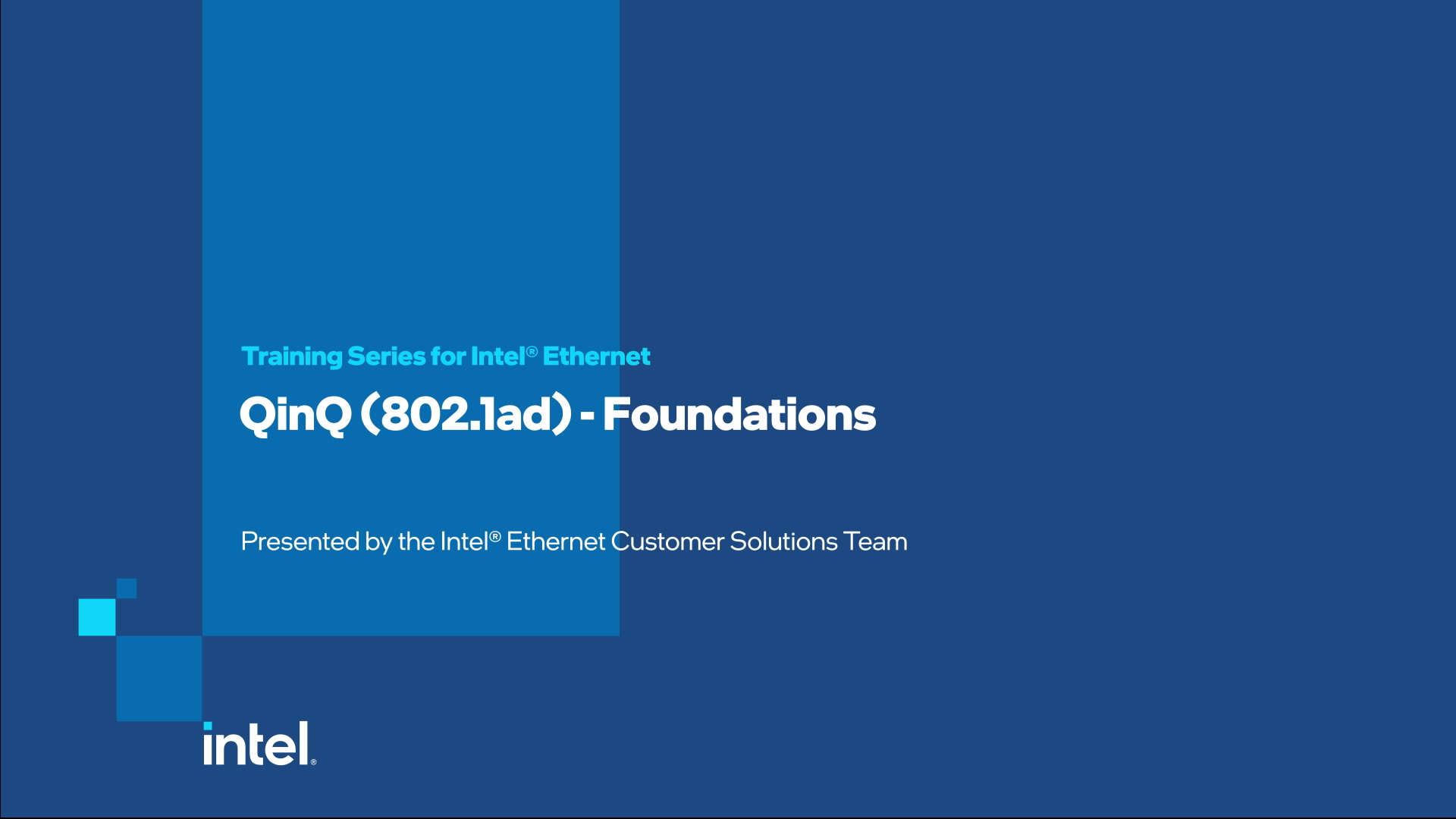Program Overview
Intel produces high quality ethernet solution in order to help customers move data faster. With products and technologies designed to meet the network demands in this data-centric era Intel provides Ethernet products that allow the user to transport data at rates of 10, 25, 50, and 100 Gbps, and supports technologies such as Application Device Queues (ADQ) the advanced traffic steering technology, Dynamic Device Personalization (DDP) to reduce latency and improve packet processing, and Remote Direct Memory Access (RDMA) to improve network performance for low latency, high throughput networks, and many more that you will learn about through this academy of training.
8 Courses
Share With
The disaggregated nature of vRAN systems provides Communications Service Providers with the flexibility to build solutions that meet specific deployment needs. Ethernet connectivity is a critical element of any vRAN system, and Intel® Ethernet 800 Series Network Adapters are optimized to meet the needs of these deployments.
In this course, we will cover
• The network elements of a vRAN system
• The importance of high-accuracy network timing and synchronization
• How Intel Ethernet 800 Series Network Adapters with hardware-enhanced timing capabilities meet these needs
Learn how Intel® Ethernet 800 Series Network Adapters meet the needs of key Communications workloads. This course matches adapters to specific workloads, including vRAN, UPF, CDN, CPE, and visual compute, and identifies the features that meet key requirements.
Come explore a new feature introduced in the Intel Ethernet 800 series: switchdev mode for the controller’s embedded switch. This feature allows adapters to support hardware assist for virtual switch filters.
Q-in-Q, also known as double VLAN, or VLAN stacking, is a standardized networking technique that allows a packet to be encapsulated by two or more VLAN tags. Explore the fundamentals of Q-in-Q and the installation basics while understanding how to view Q-in-Q statistics. Learn how to enable VLAN Filtering and Offload, then cover the basics of configuring Q-in-Q in a virtual and non-virtual environment.
This course explains BPF/eBPF which is the underlying functionality of XDP and AF_XDP, then explains how XDP allows users extend, accelerate, and secure applications, all while reducing CPU utilization. Learn how AF_XDP allows user-space applications to use existing socket APIs to processes packets at line rate while maintaining kernel security.
In this course, discover how NVMe over Fabrics (NVMe-oF) allows for use of NVMe commands over a networked fabric to manage NVMe/PCIe SSDs in servers and storage systems. This training provides an overview of the a reference guide for configuring NVMe* over TCP on Linux* operating systems using Intel ® Ethernet 800 series devices.
Dynamic Device Personalization (DDP) provides the ability to reconfigure the packet processing pipeline to support a broader range of traffic types. Additionally, program pipelines are a backbone of the receive packet processing engine. Learn how Intel® Ethernet 800 Series Controller is fully programmable via Dynamic Device Personalization (DDP).
The Intel® Ethernet 800 Series training introduces new controllers and adapters with 10/25, 50, and 100Gbps speeds, multiple form factors (PCIe and OCP NIC 3.0), and broad OS support. In this training, learn about all Intel® Ethernet 800 Series products featuring ADQ requirements and capabilities, and how to improve performance.








